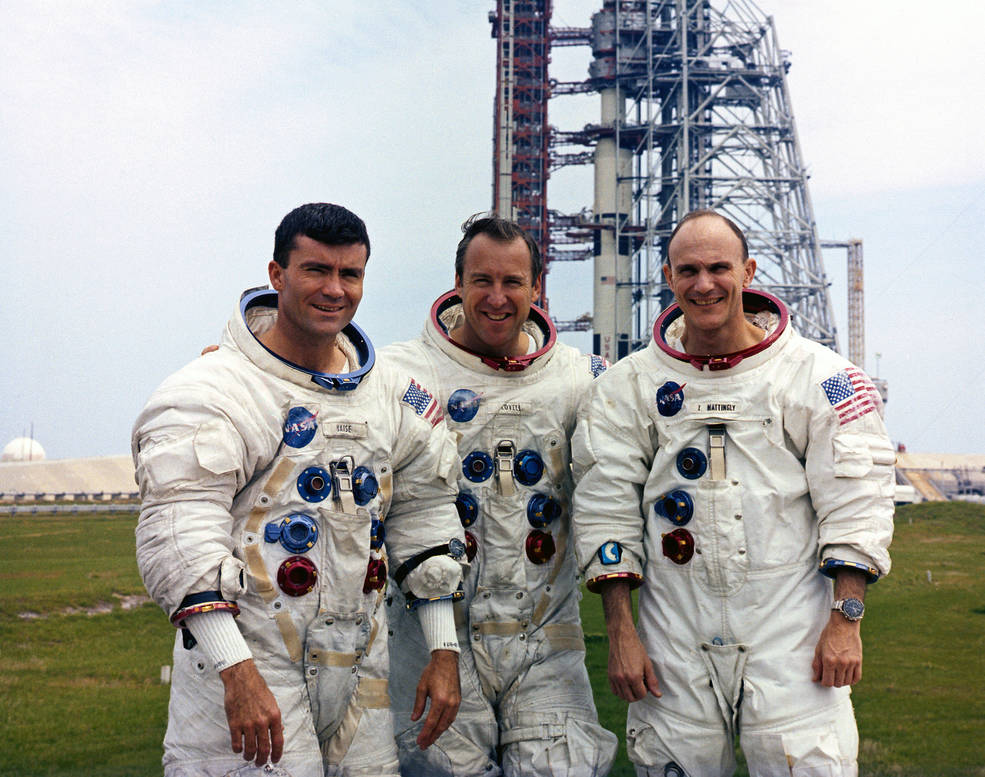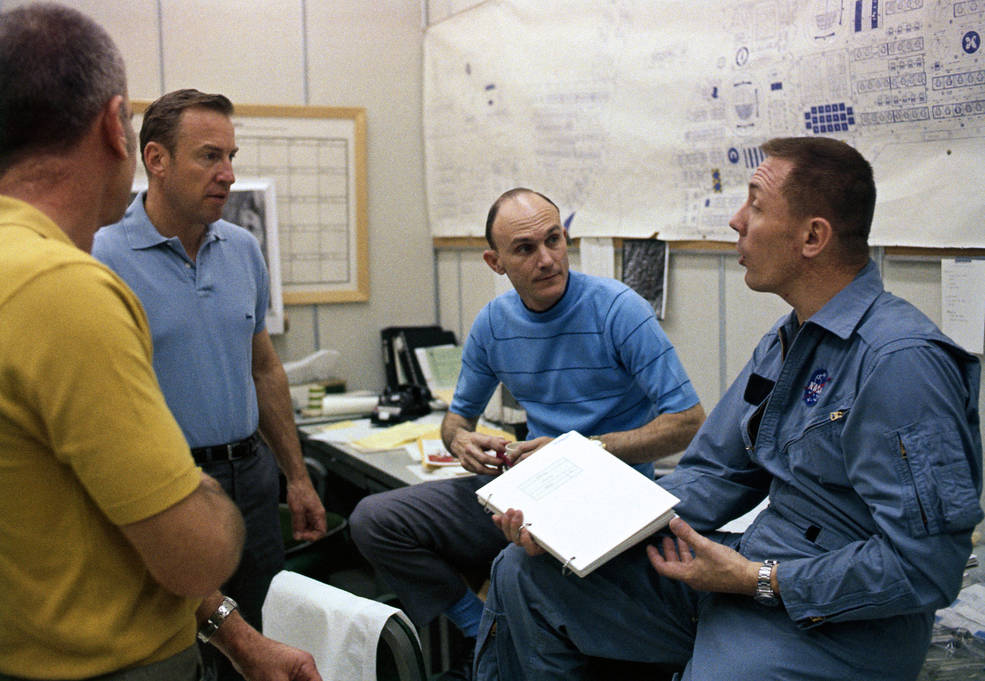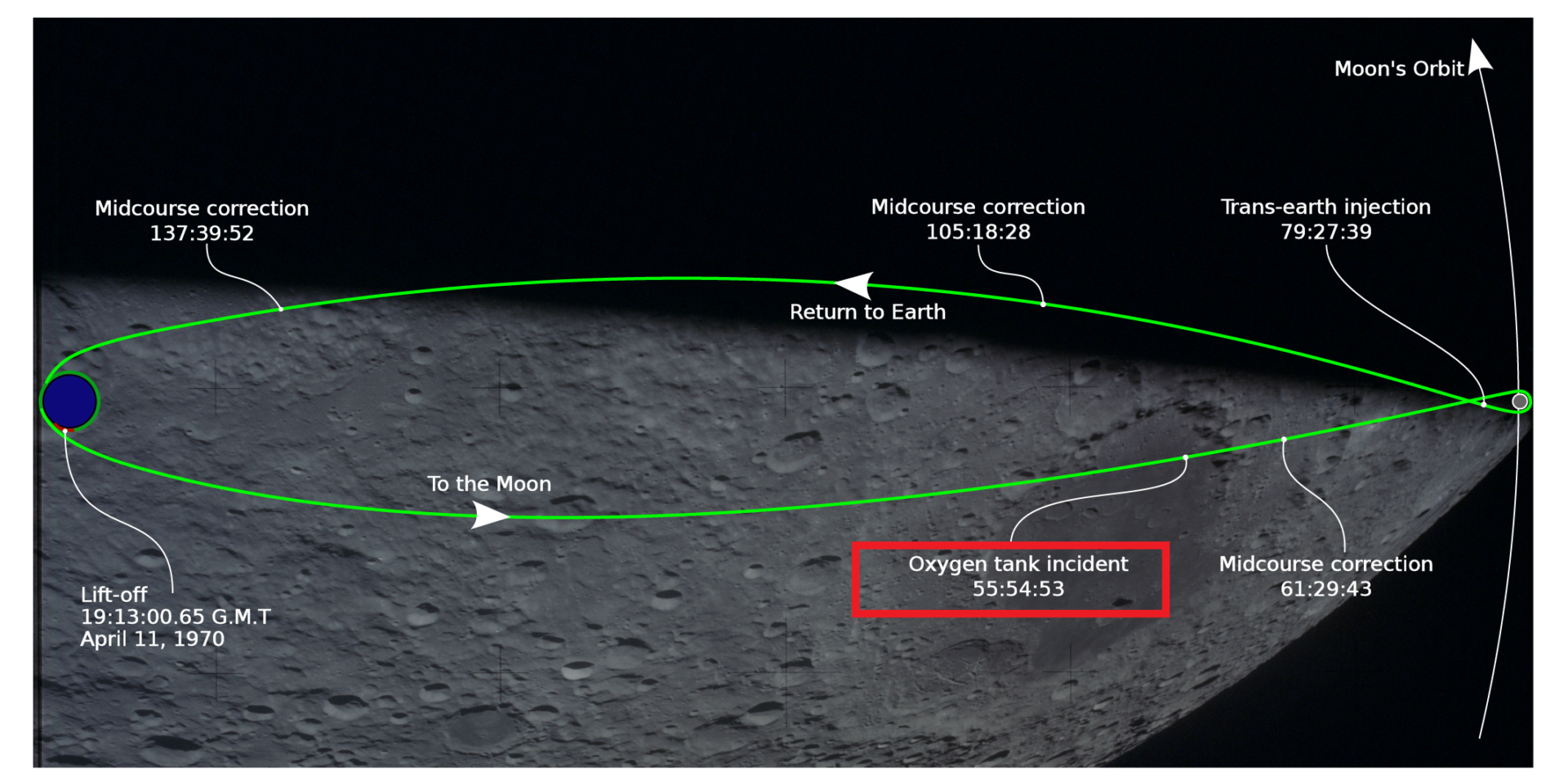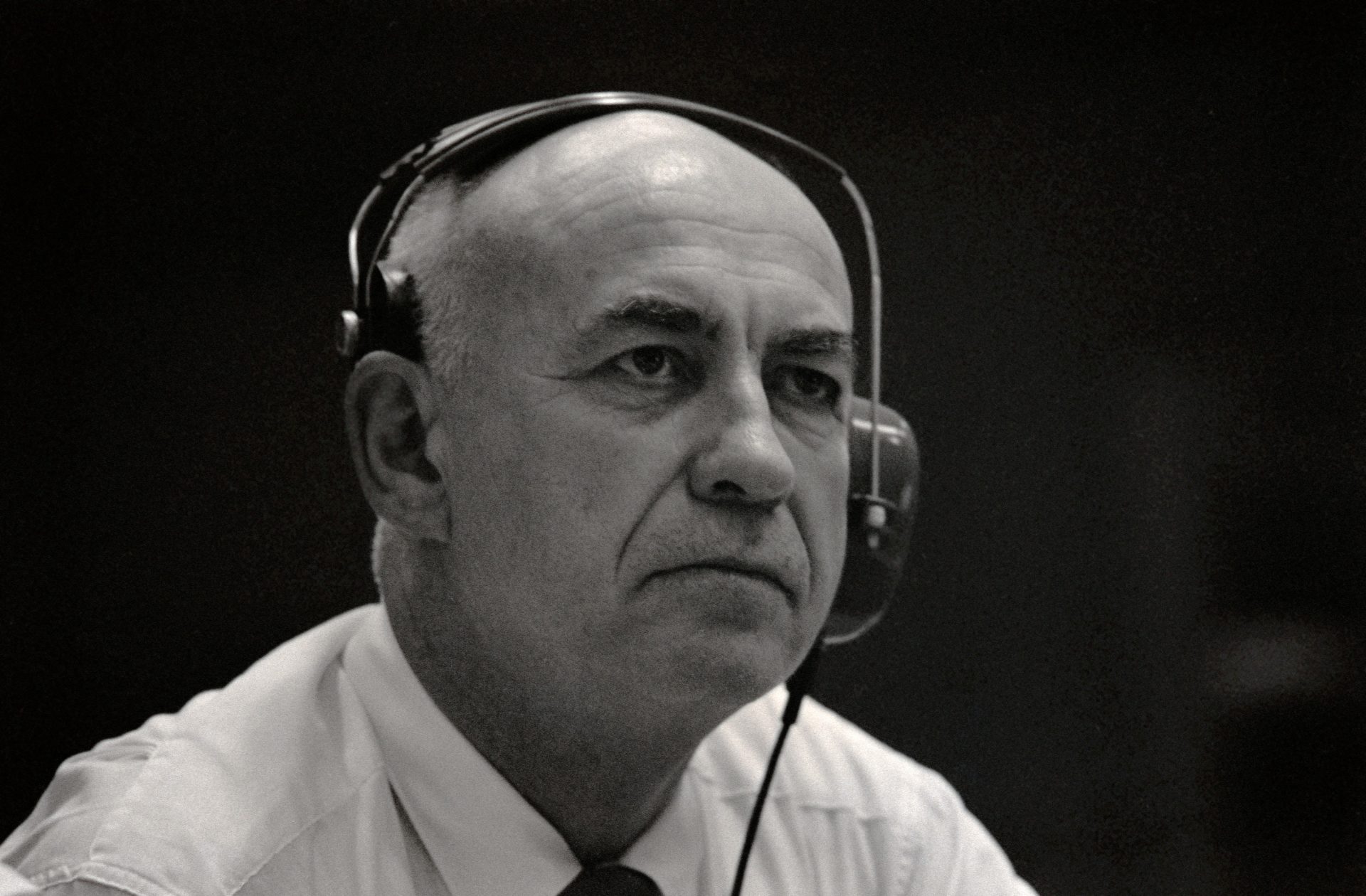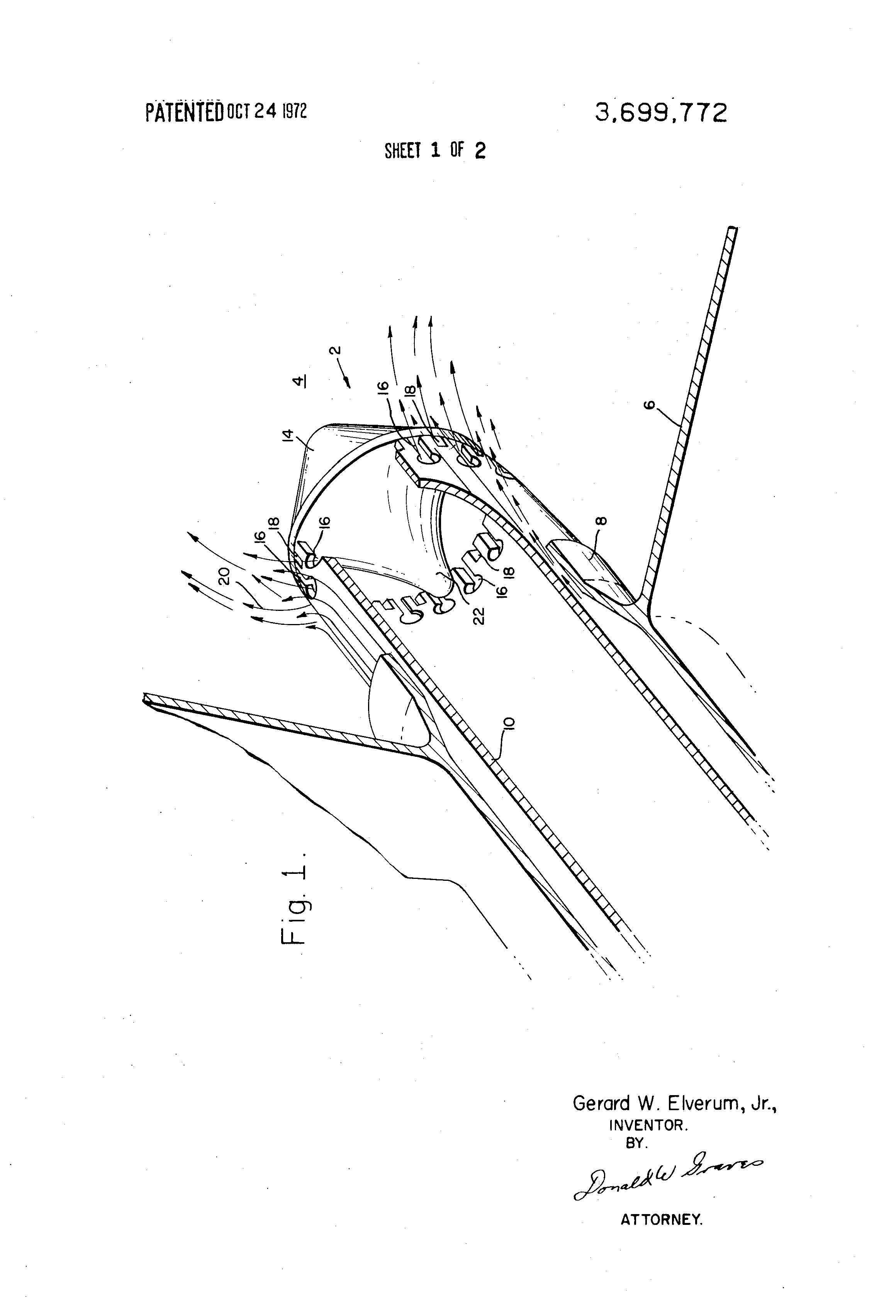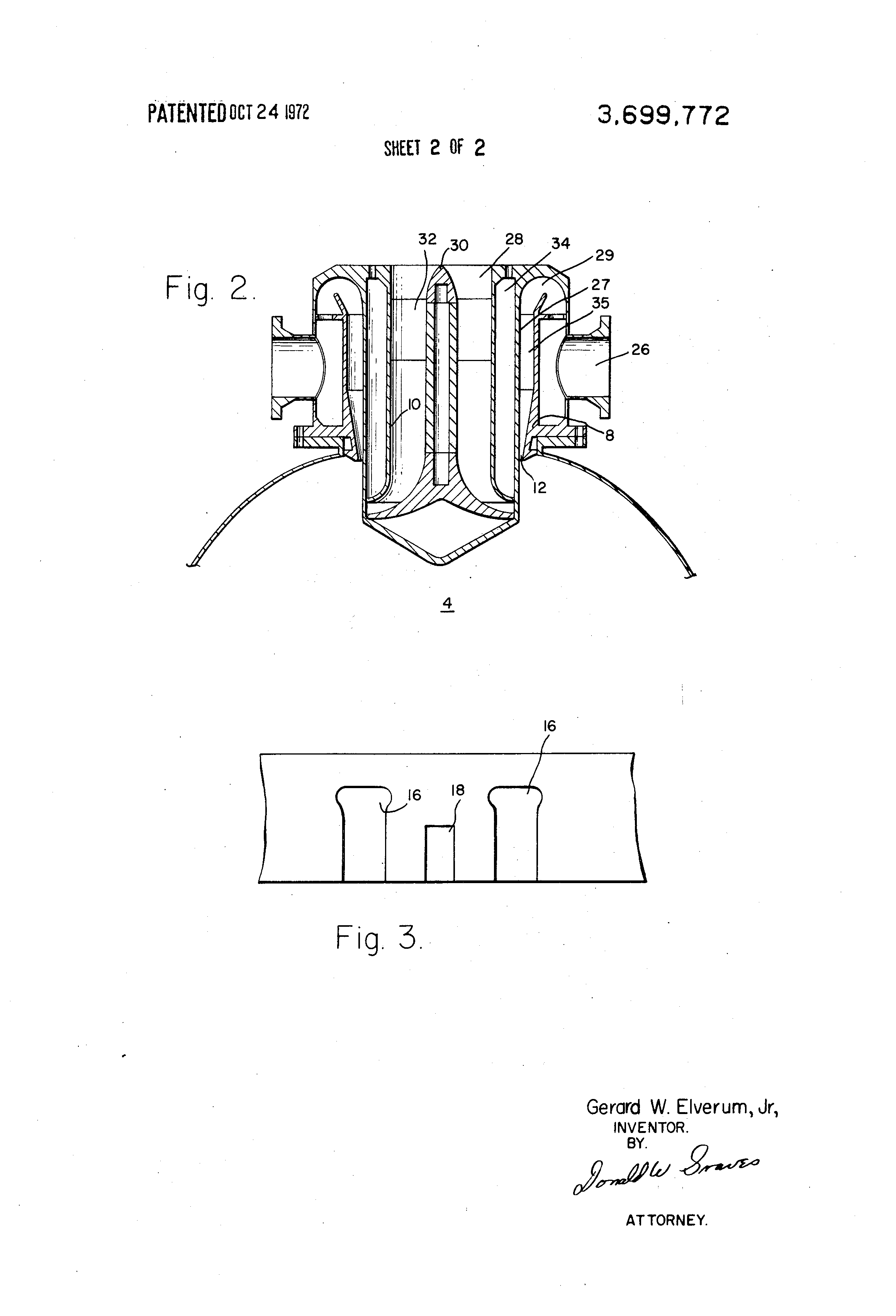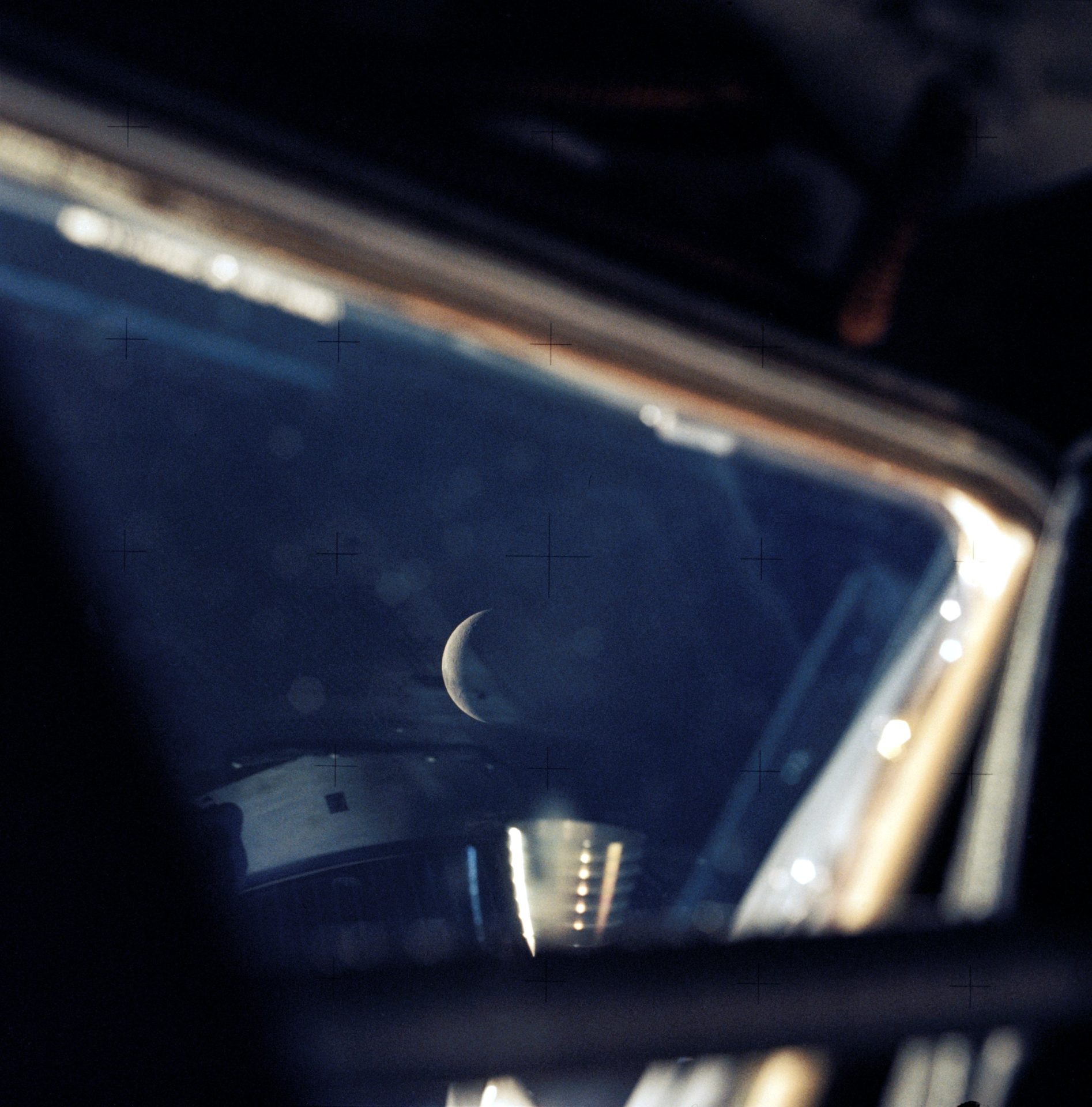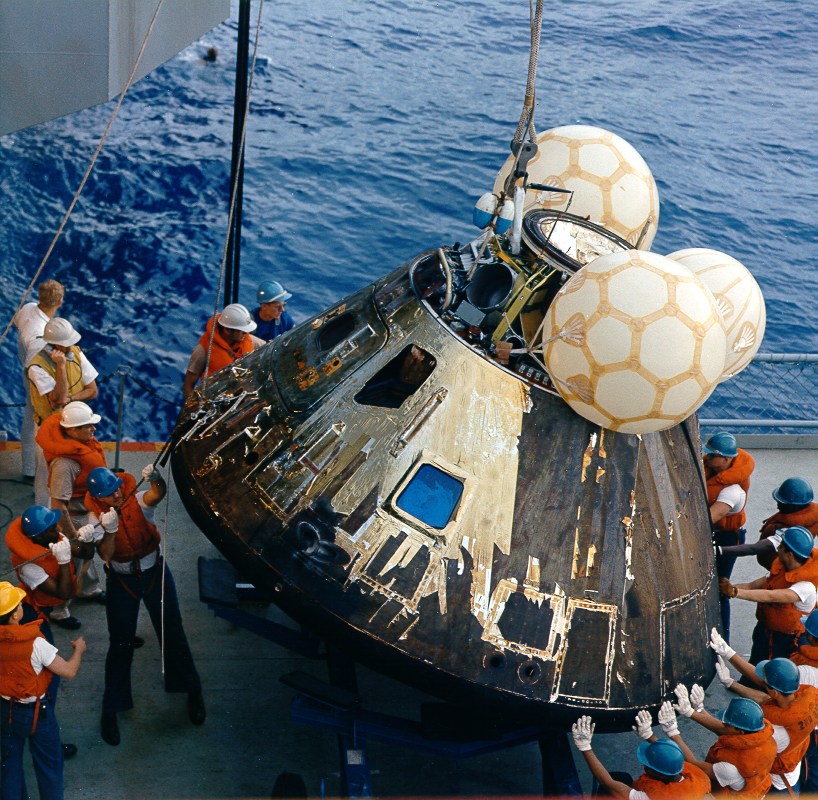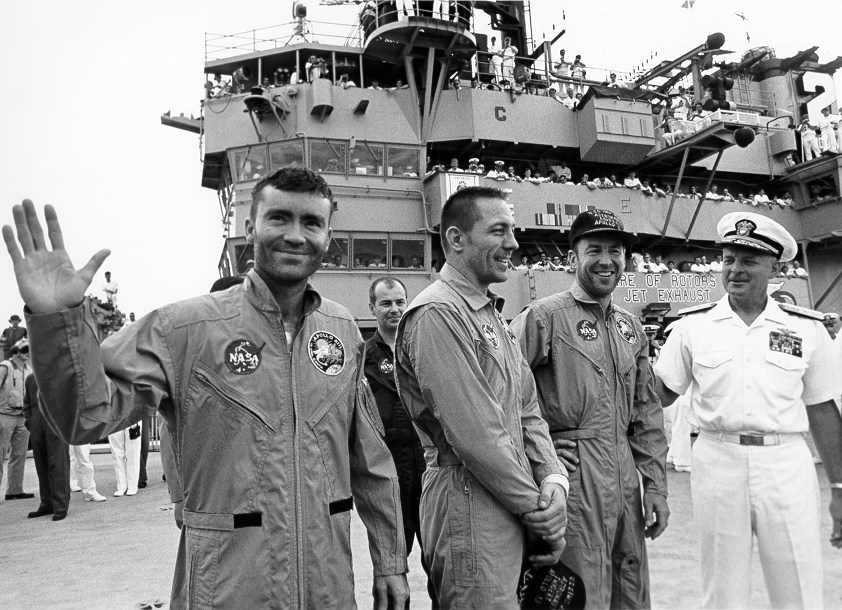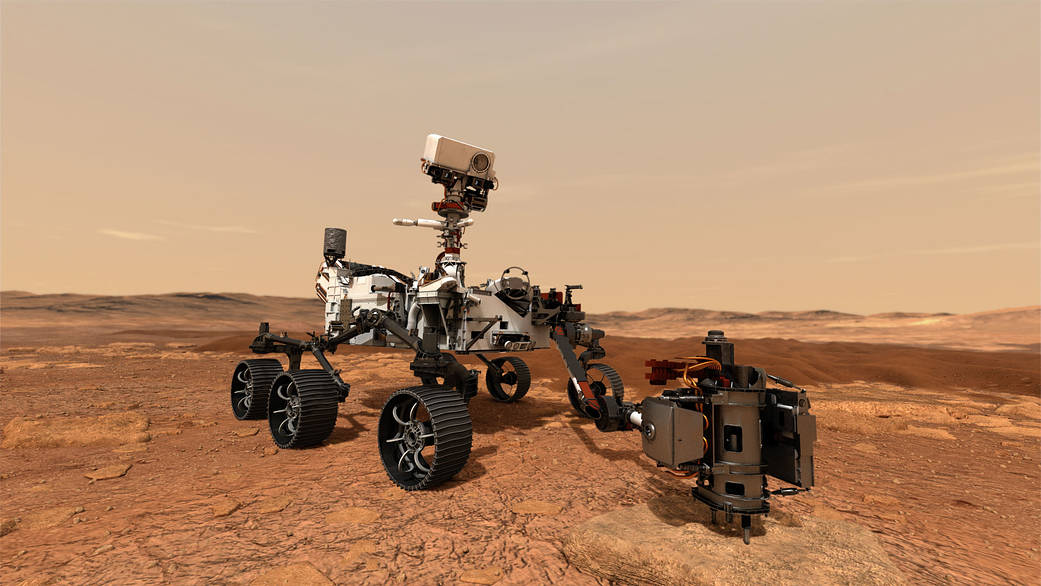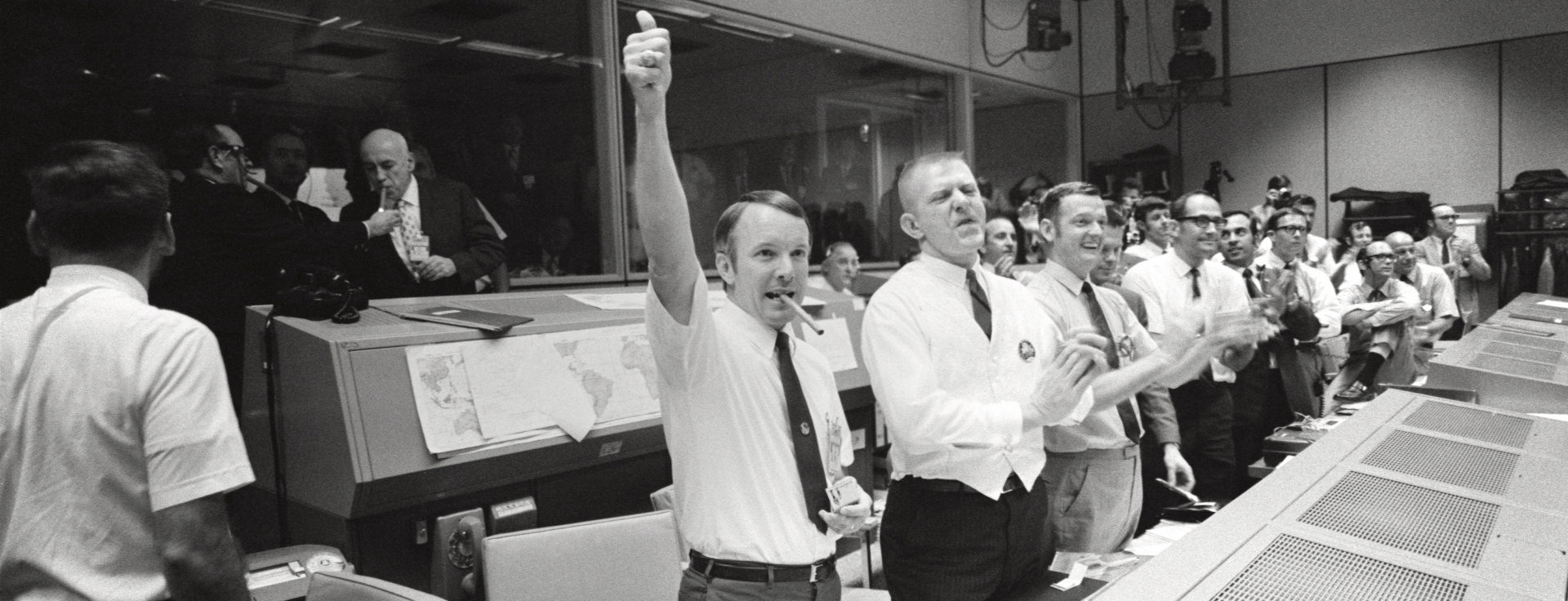
A Successful Failure: A Brief History of the Apollo 13 Mission
On this day in 1970, Apollo 13 safely returned to Earth
Published04/17/2020 , by Kaitlin Ehret, planetarium outreach educator
One of the best-known lines that was never said by an astronaut.
If you listen to tapes from the Apollo 13 mission, you’ll hear the original words: “Okay Houston, we’ve had a problem here.”
While the Apollo 13 movie increased the suspense by changing the quote to the present tense, the original phrase reflects the calm kept by the astronauts of Apollo 13 throughout their ill-fated mission.
With ingenuity, resilience, and perseverance, everyone involved in the mission triumphed against immense odds. Today marks the 50th anniversary of the safe return of those three astronauts. Join us as we take a look at the challenges of the mission and these lessons from the past can help us plan for the future.
Rubella Grounds Mattingly
Before Apollo 13 ever lifted off, the mission encountered problems. Problems that feel eerily similar to what we’re living through today.
Days before launch, back up crew member Charles Duke fell ill with the rubella virus… after training with the rest of the crew while asymptomatic. Of the six, only Command Module Pilot Ken Mattingly and Duke had no previous immunity.
With only two days before launch, Deke Slayton, Chief of Flight Operations and UMN alumnus, decided to replace CMP Mattingly with CMP Jack Swigert.
Even with this last-minute swap, the new crew of Apollo 13 aced a last-minute lunar module docking simulation and had the resiliency to proceed with the mission as planned.
On the third day of the mission, a sharp bang and alarm lights changed everything. Lovell, quoted above, noticed that the craft was venting some sort of gas into space: oxygen. It was oxygen the crew needed to breathe and to generate power within the fuel cells. Within 3 hours, that oxygen was gone, along with the supply of water, electrical power, and control of the propulsion system.
Shutting down as much as they could, the crew moved into the Lunar Module to use its oxygen supply and Mission Control started calculating how to get them home safely.

Pointing Towards Home
200,000 miles from home, the Apollo 13 astronauts were hunkering down inside of their Lunar Excursion Module (LEM) and getting further away from home by the minute. To get back, their spacecraft would have to be set on a new trajectory. But the LEM was designed to take two astronauts to the lunar surface, not perform extensive mid-course corrections in space while attached to a dead Command Service Module.
But where there’s an engine, there’s a way. The LEM engines were unlike other rocket engines: developed by UMN alumnus Gerard Elverum Jr., they were “pintle injector” and were designed to throttle their output up and down as needed.
With a new way to move their spacecraft, the astronauts, along with Mission Control on Earth, had to finalize a new plan. Under the direction of the Manned Spaceflight Center director Robert Gilruth (another UMN alumnus), Apollo 13 made two crucial adjustments and one trip around the far side of the Moon that set them on their way back home
Square Peg, Round Hole
What do you do when you have to fit a square peg into a round hole? Use plastic bags, cardboard, and tape.
The three Apollo 13 astronauts were living in the Lunar Excursion Module: a craft designed to support two men for two days, not three men for four days. During the four day flight back to Earth, carbon dioxide levels became dangerously high and had to be scrubbed from the air. Unfortunately the LEM’s scrubbers were round canisters, and the only other replacement scrubbers — in the Command Service Module — were square.
To solve this, Mission Control engineers embarked on an incredible example of ingenuity and teamwork. Using only materials available to the astronauts, engineers on Earth designed and tested an attachment system for the scrubbers. Following Mission Controls’s instructions, the astronauts constructed the system on board, which began working immediately.
A Successful Failure
Resilience, ingenuity, and perseverance: Apollo 13 is remembered as a triumph of these human characteristics.
Resilience in the face of crew changes; ingenuity in solving fatal problems; and perseverance throughout to get them home safely.
Those same traits continue to guide humanity, including the next generations of astronauts returning to the Moon and going even further — to Mars.
NASA’s next rover to Mars has been named Perseverance after the quality that humans have always had and will continue to hold as we travel further into space.



